| Feral Dartmoor Ponies -
England |
|
The Dartmoor Pony is one of nine breeds native to the British Isles. The area from which it originates is a rocky, barren, moorland called Dartmoor in Devon, England. The sparse grazing and bleak conditions of this moor ensure that only the toughest of its inhabitants thrive. Dartmoor Ponies have roamed the moor for many centuries. One of the earliest recorded references to these ponies is in the will of a Saxon Bishop, Awlfwold of Crediton, who died in 1012. During the reign of Henry I (1100-1135), when Dartmoor was a royal forest, a stallion was taken from the moor and was used breeding with the royal mares. Many years ago, tin mining was an important industry in the Southwest of England. Many Dartmoors were used as pack ponies, carrying the tin from mines to the surrounding towns. When the mines closed, most of the ponies were turned loose to roam the moor, except for a few retained by local farmers for use on the farms. |
|
The Images and Narrative on this page were submitted by Pat Howe pathowe@claranet.co.uk Copyrite Notice: All images on this page are the property of Tribe Equus and Pat Howe. They may be reproduced for educational purposes only with appropriate credits given. They may not be reproduced for commercial purposes. |
The Dartmoor Ponies
| A
note from Pat: I live in a wet area of England
which is upland and has herds of feral Dartmoor ponies. Their feet are
always the same. Long toes,wall always below the sole all round,
concaved, thin walls, relatively high heels, flared and they trim by
"wet weather" trimming ie they flare and break off. To some extent
though although they are long and flared the feet seem to be self
regulating in respect of growth.
They have a variety of terrain which ranges from bog, mud, wet moorland, dry springy grassy moorland, tarmac roads, stone tracks. They have abundant natural feed They look well but not fat. They do not seem to get laminitis although they could eat 24/7. They are sound. Once a year these ponies are rounded up and brought down off the moor, some fillies go back onto the moor with their mums. A lot of the rest go for meat or kids ponies. |
|
The ponies are around 12 hh. The M
that you see on the saddle area on the side is a brand. All the ponies
have owners, i.e., local farmers who keep them in herds. Each farm has
grazing rights on the common for a certain number of ponies, cattle and
sheep.
The mares live out on the
common all year round. They are not natural herds as the mustangs are
as a small number of stallions are put out on the commons and each has
it's own herd as opposed to young colts growing up and fighting it out
for leadership. The foals are taken away in October. Some fillies go
back on the commons for replacements, the rest, and the colts, are
disposed of. After the mares come in and the foals are taken away, the
mares (other than those which would be culled) go back out onto the
common, so the mares are probably the nearest thing we have to feral
ponies.
They have no natural predators and the worst predators are in fact deaths from being hit by speeding motorists. |
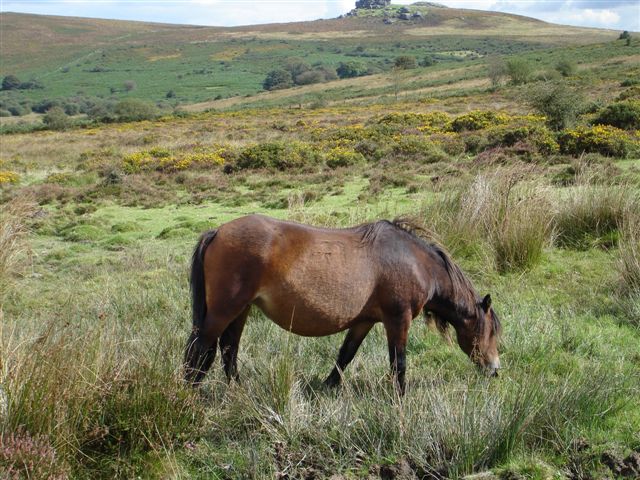 |
This is a mare and foal and shows the underfoot conditions. They are standing in a marshy area. |
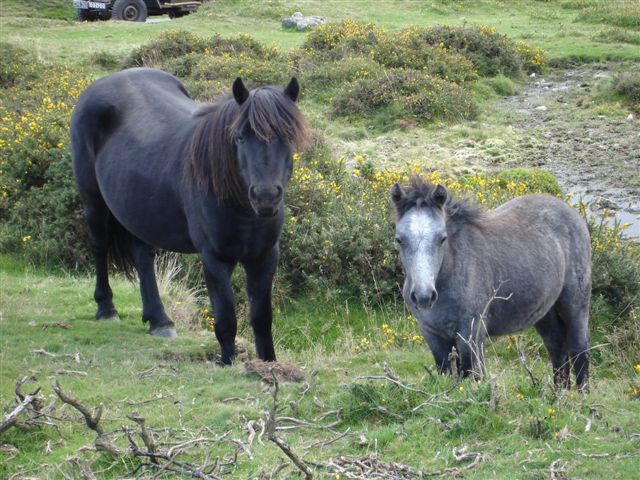 |
This is the first picture in the sequence of the grey pony. To follow will be the feet. You can see the ear tag. This was a very obliging pony. Most,
other than at the ice cream van sites, will not let you get close
enough to touch, but this one actually let us pick upher front feet. We
were not brave enough to try for the hinds! |
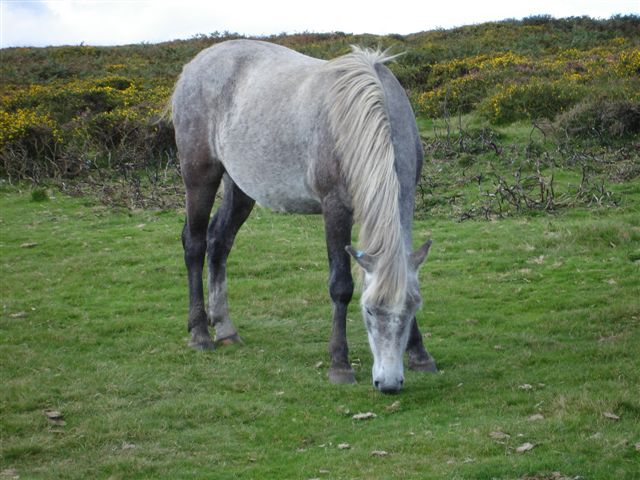 |
This photo of the grey pony is the left front. |
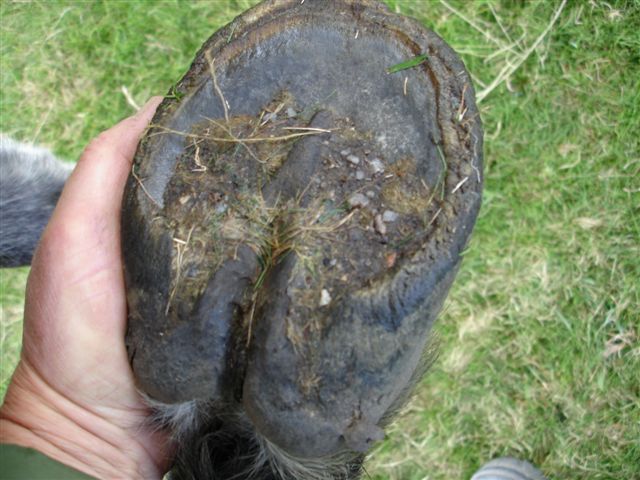 |
This photo of the grey pony is the right front. |
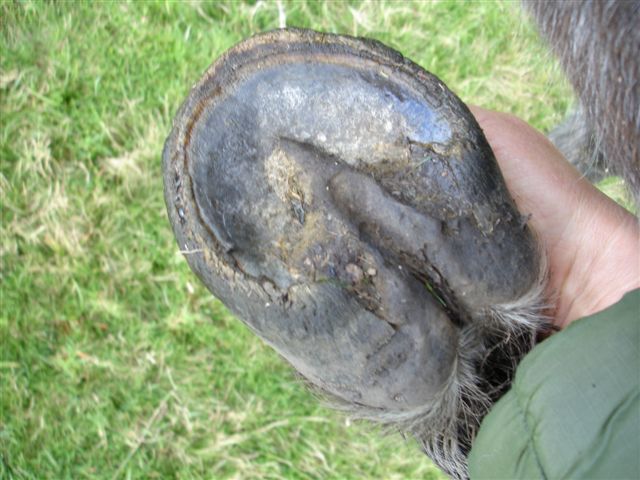 |
This is the right front. The pony was standing in grass and it was not easy to get a clear view of the foot so we thought picking it up may be easier. |
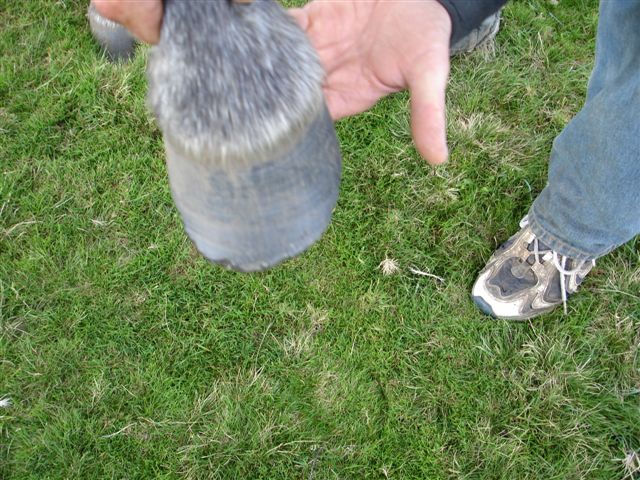 |
Left front |
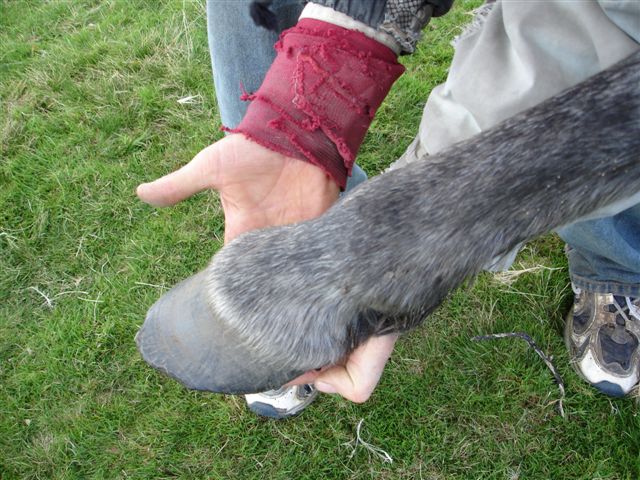 |
Foal |
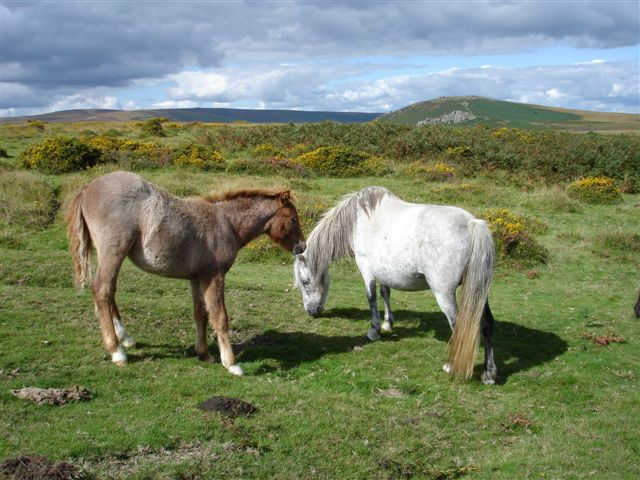 |
Front feet of the foal above |
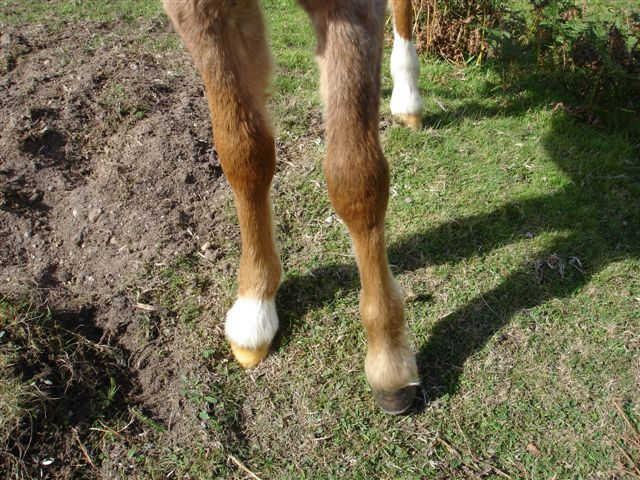 |
Hind feet of same foal |
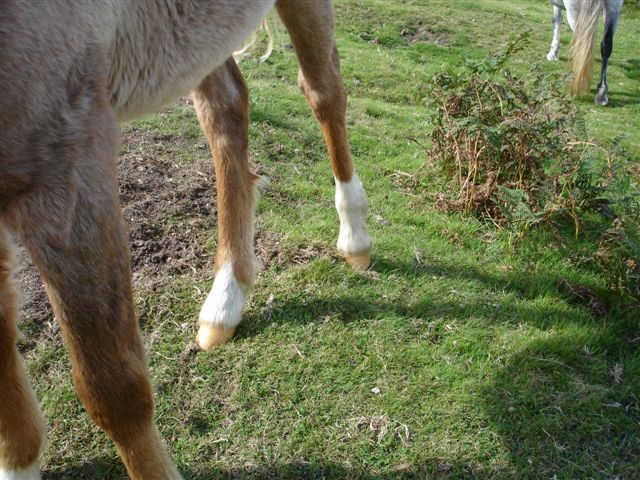 |
This photo and the two below it, give you an idea of the type of environment where these poines live and roam. |
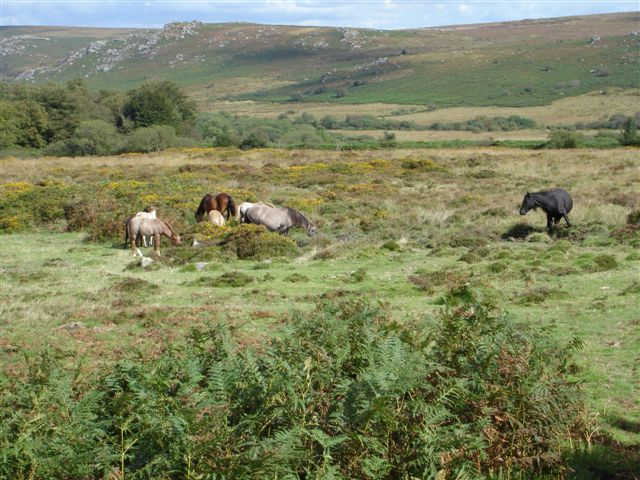 |
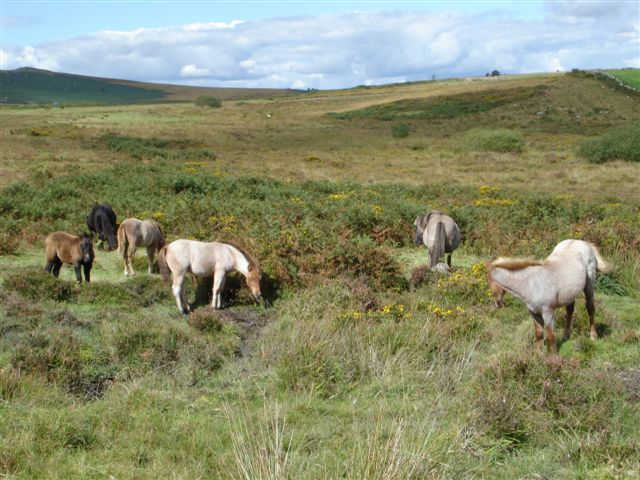 |
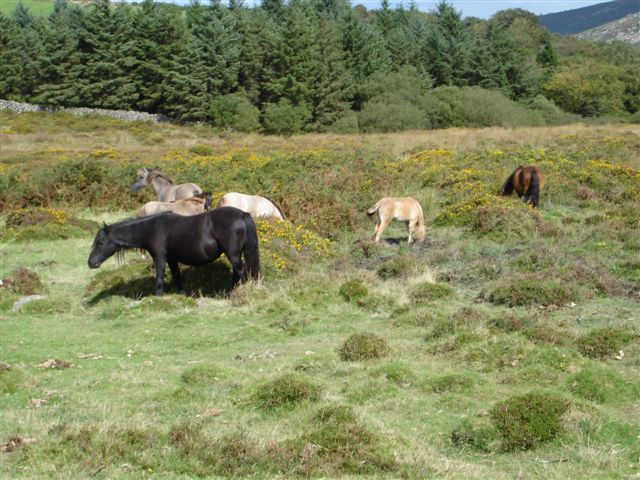 |
| More from Pat: I am often called upon to trim these ponies. I used to view these like Western U.S. mustang feet, the feet all of us see in the books and on the internet. Lets get rid of the flare, roll them etc etc. However often I trimmed it didn't work. I moved onto the ridden ones. These, I was sure with my wild horse like trim and the kids riding over anything the feet would soon get the idea. Wrong! The walls on the ridden horses never stay level with the sole, they always put down a "bead" of wall 10 to 2 o'clock around the sole. After studying the feral feet of these ponies I just now trim them to what the foot is trying to produce and accept the flaring (if indeed it is flaring) and that they want to ride on the bead of sole. |
|
| Barrier Island Wild Horses Eastern U.S.
- Prairie Wild Horses
- Wild Horses on the Moor, U.K. -
New Zealand Wild Horses - Virginia Wild Ponies Wild Burros - Wild Horses of Central Asia |
[Home]